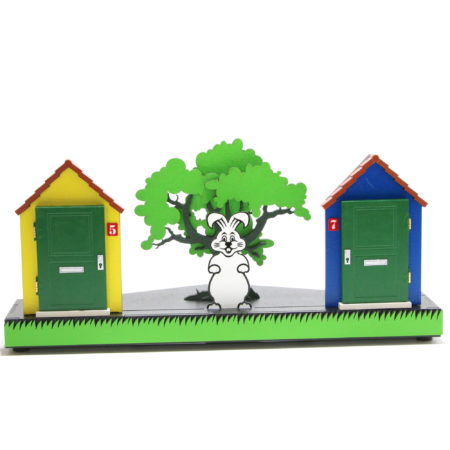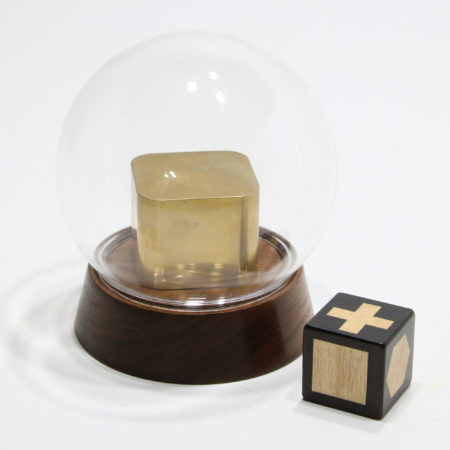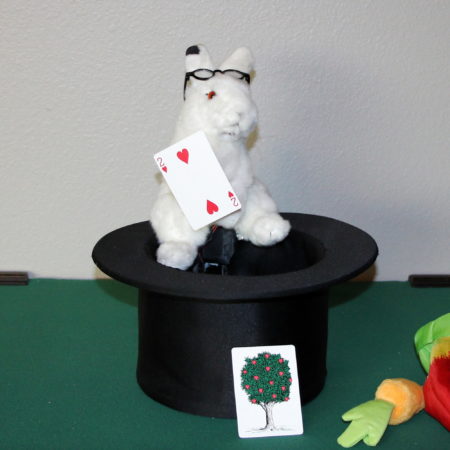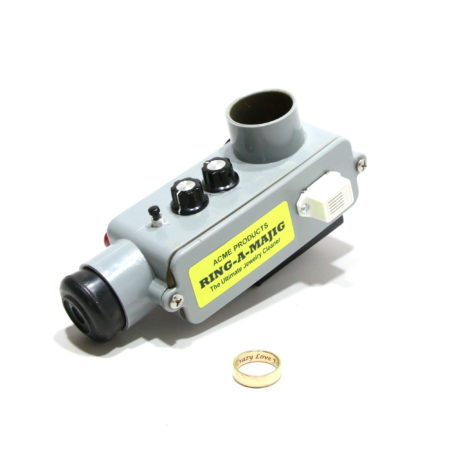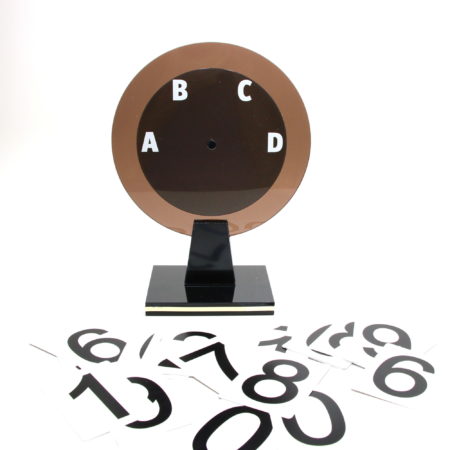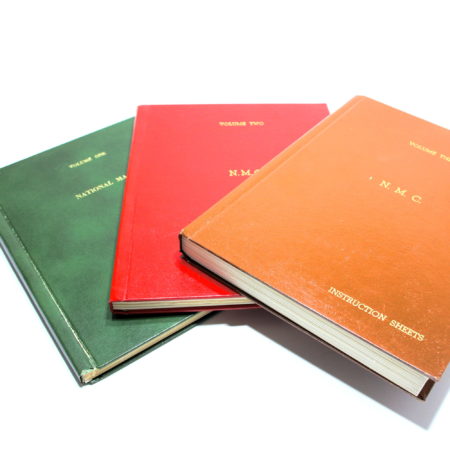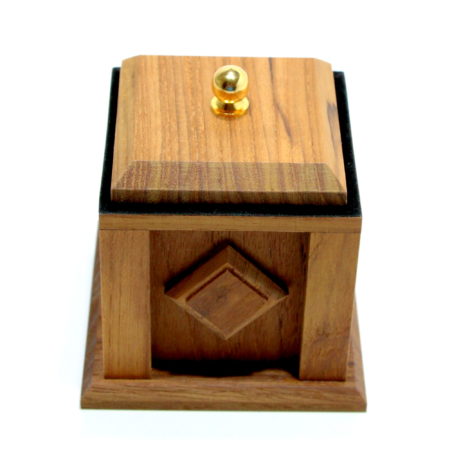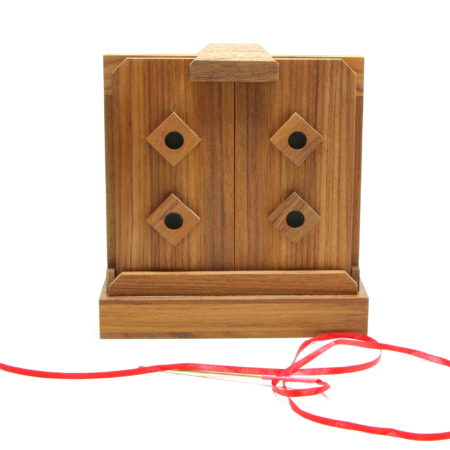
This effect originally called Bloxo, was invented by John Rice and sold by Harry Stanley c. 1960.
Pagoda is the definitive version of the the effect using a solid blade or rod to secure the blocks and was created magnificently by the Dutch master craftsman: Eddy Taytelbaum. Eddy did such an amazing job he inspired many craftsmen including: Alan Warner, Mel Babock, Milson-Worth and more recently Magic Wagon to create their own versions.
Eddy made two sizes of Pagoda and this is the significantly rarer, small version. I say small because his standard version is small (4-1/2″ by 2-3/4″ high and 1-3/8″ deep), this one is tiny (3-1/2″ by 2-3/4″ high by 7/8″ deep). When compared with my previous favorite version created by my good friend Alan Warner this version is dwarfed (see final three photos).
Not only is Eddy’s version exquisite, he uses a different approach to extracting the chosen blocks. Instead of letting the box spin around and have the blocks fall out, in a potentially random and risky fashion, he turns the box around so that all six blocks can been seen and uses a small wand (or in my photos a small metallic cocktail sword) to push out the chosen blocks, leaving the others clearly and unmistakably impaled.
Eddy also supplies a custom color cube to help select the colors completely at random (I am in two minds if you should use that or not since it slows down the routine a little, but it is up to you.)
Most of the versions that come up for auction on Potter & Potter and elsewhere are of the larger version, and it is rare to see this tiny version, but it is great to see it in the collection 🙂
Click here for more information.

